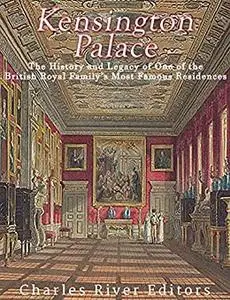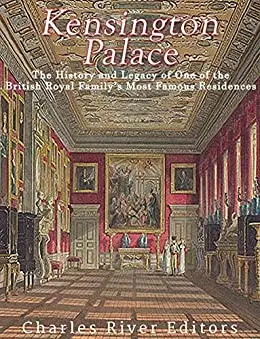Kensington Palace: The History of One of the British Royal Family’s Most Famous Residences by Charles River Editors
English | February 27, 2017 | ISBN: 1544144032 | 72 pages | EPUB | 2.64 Mb
English | February 27, 2017 | ISBN: 1544144032 | 72 pages | EPUB | 2.64 Mb
*Includes pictures
*Includes contemporary accounts describing the palace
*Includes online resources and a bibliography for further reading
“We think of medieval England as being a place of unbelievable cruelty and darkness and superstition. We think of it as all being about fair maidens in castles, and witch-burning, and a belief that the world was flat. Yet all these things are wrong.” - Terry Jones
When people think of the British Royal family, and more specifically where they live, the first image that often pops into mind is that of stately Buckingham Palace, with its changing of the guard and the occasional royal coach leaving or entering. Others may think of the royal country estate of Windsor Castle, a favorite of both Britain’s longest-reigning and second longest-reigning monarchs. But there was a time when both royal residences played second fiddle to a much better known home, the elegant Kensington Palace.
Like many royal residences, Buckingham and Kensington began their lives as large private homes, and it was only after a king, or in Kensington’s case, a king and queen, took notice of them that they were expanded into the size and grandeur that they display today. Even this work was not the product of one major overhaul but of several, spread across decades of changes in architecture, interior design, and even technology.
King William III purchased Kensington Palace in the early years of his reign, less than three short decades after the Stuarts returned to the throne, and he and his queen were the first monarchs to move the British court there. Later, his successors became more attached to the palace, and by the time King George I, the first king from the House of Hanover, came to the throne, Kensington was considered the best place for the king and his family to live.
Ultimately, this did not last for long, because in spite of all the work King George I and King George II put into the palace, King George III preferred to live elsewhere, primarily the new Buckingham House. As a result, Kensington became the home of lesser royals, such as the penniless Duchess of Kent, who raised her little daughter, Victoria, there. Later one of England’s most famous queens, this little girl grew up to use Kensington as a place to house relatives that she wanted to keep close by or felt some other moral obligation to.
In the century that followed Queen Victoria’s reign, the palace became something of a “starter home” for newlywed princes and princesses, from the star-crossed Charles and Diana to the ever-popular Will and Kate. In fact, it is quite likely that young Prince George or his sister, Princess Charlotte, may one day begin their married lives in the house.
Even as Kensington Palace continues to have a formal role, it is far more than a royal residence today. For more than a century, many of the State Rooms formerly used to house monarchs have served as a popular museum for both those from London and the millions of tourists that visit the city each year. These rooms, along with the famous Kensington Gardens, have become one of the most popular sites in the nation, and are likely to remain so for years to come.
Kensington Palace: The History of One of the British Royal Family’s Most Famous Residences examines the long and storied history of one of England’s most famous landmarks. Along with pictures depicting important people, places, and events, you will learn about Kensington Palace like never before.



